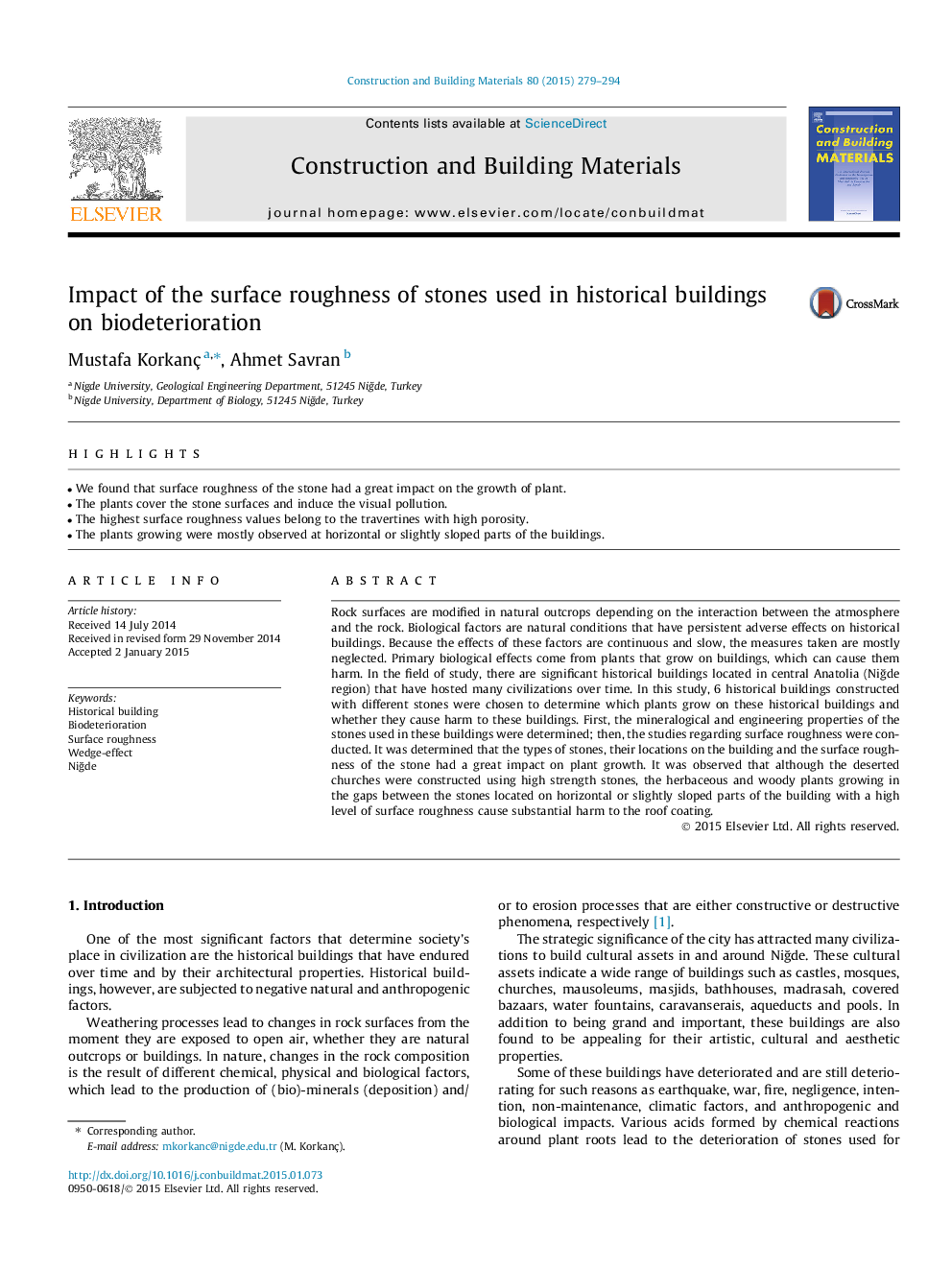| Article ID | Journal | Published Year | Pages | File Type |
|---|---|---|---|---|
| 6721342 | Construction and Building Materials | 2015 | 16 Pages |
Abstract
Rock surfaces are modified in natural outcrops depending on the interaction between the atmosphere and the rock. Biological factors are natural conditions that have persistent adverse effects on historical buildings. Because the effects of these factors are continuous and slow, the measures taken are mostly neglected. Primary biological effects come from plants that grow on buildings, which can cause them harm. In the field of study, there are significant historical buildings located in central Anatolia (NiÄde region) that have hosted many civilizations over time. In this study, 6 historical buildings constructed with different stones were chosen to determine which plants grow on these historical buildings and whether they cause harm to these buildings. First, the mineralogical and engineering properties of the stones used in these buildings were determined; then, the studies regarding surface roughness were conducted. It was determined that the types of stones, their locations on the building and the surface roughness of the stone had a great impact on plant growth. It was observed that although the deserted churches were constructed using high strength stones, the herbaceous and woody plants growing in the gaps between the stones located on horizontal or slightly sloped parts of the building with a high level of surface roughness cause substantial harm to the roof coating.
Related Topics
Physical Sciences and Engineering
Engineering
Civil and Structural Engineering
Authors
Mustafa Korkanç, Ahmet Savran,
